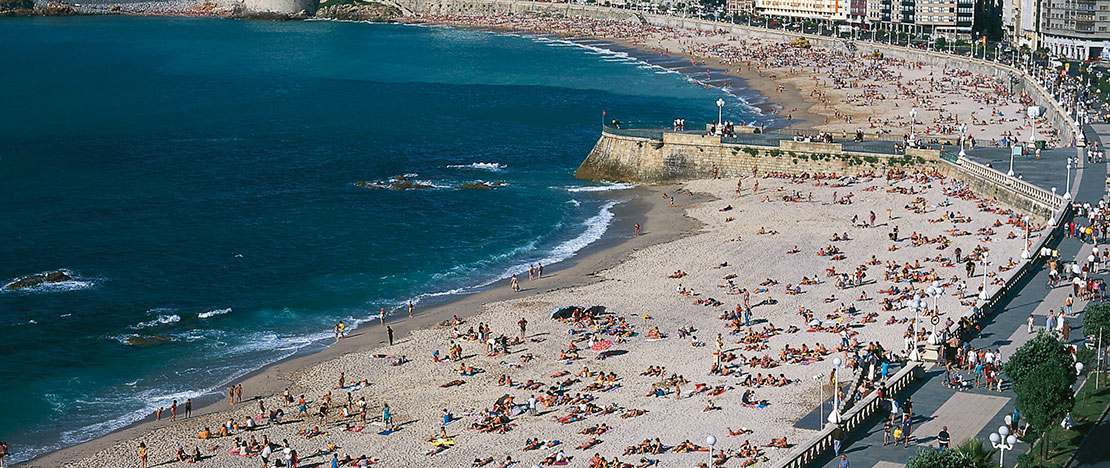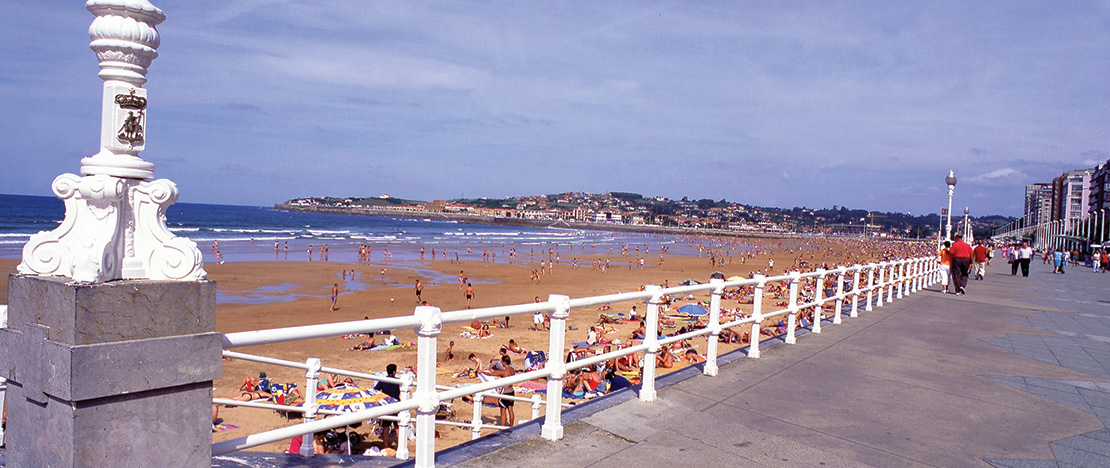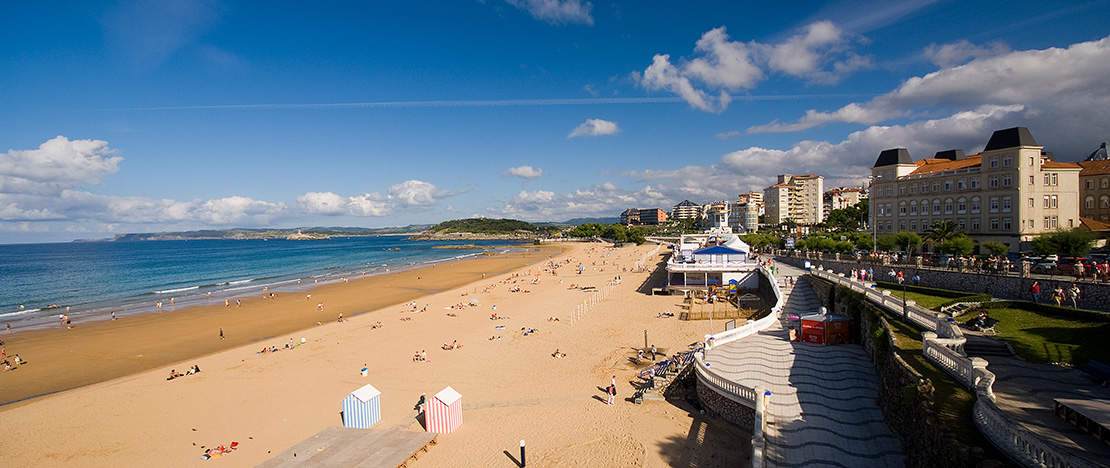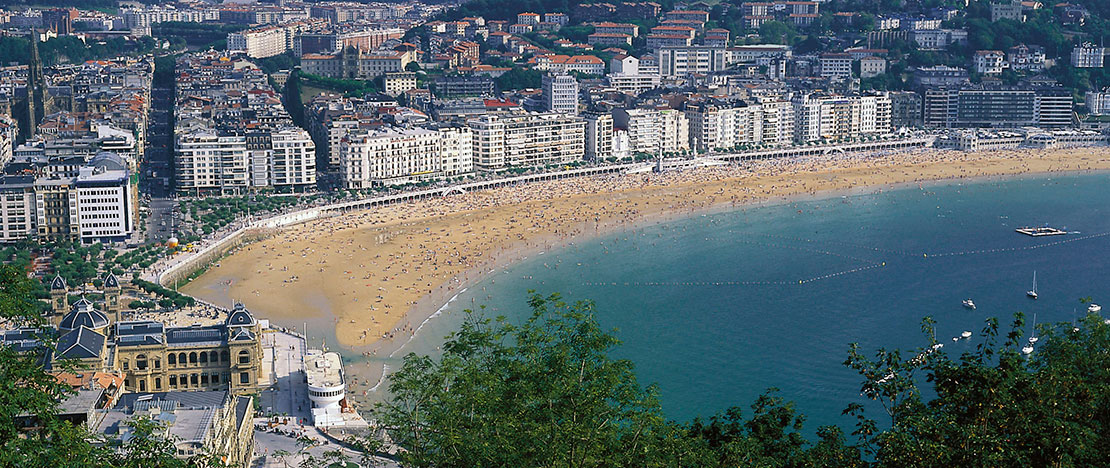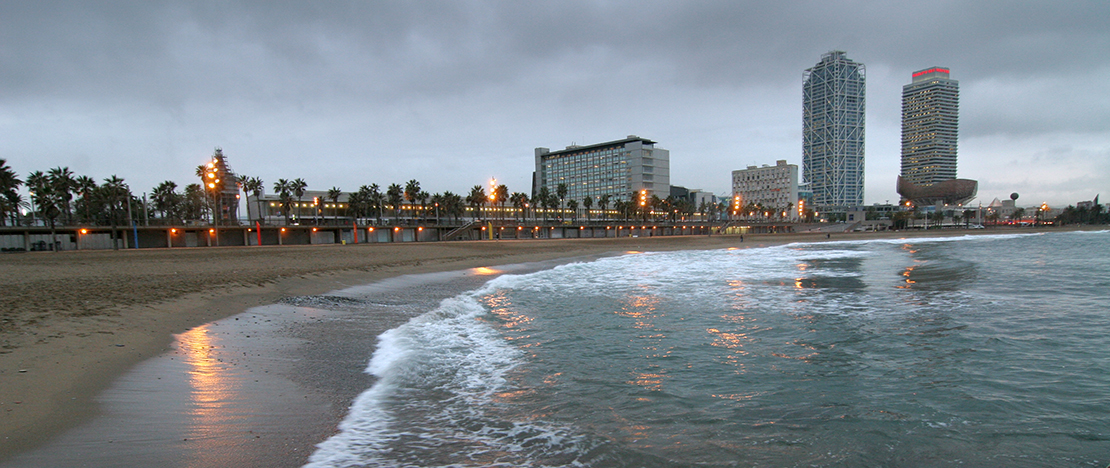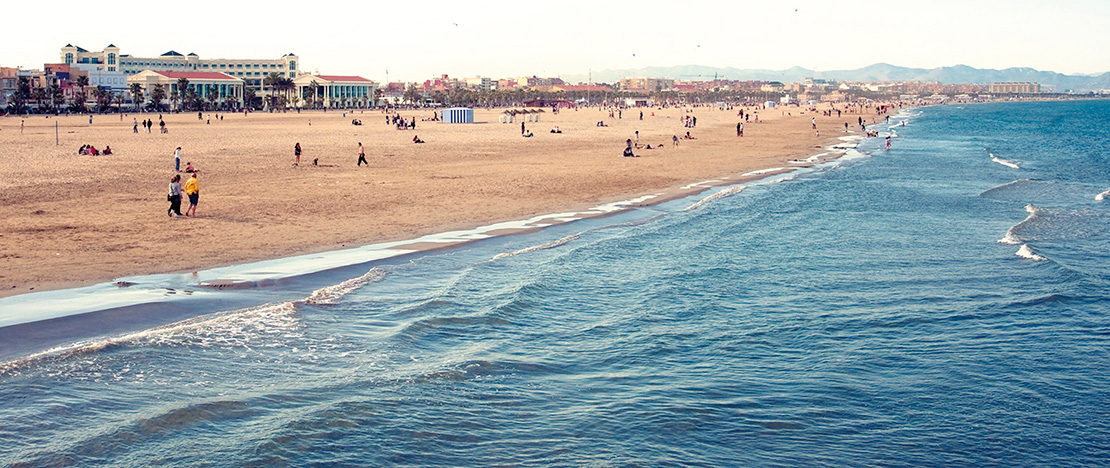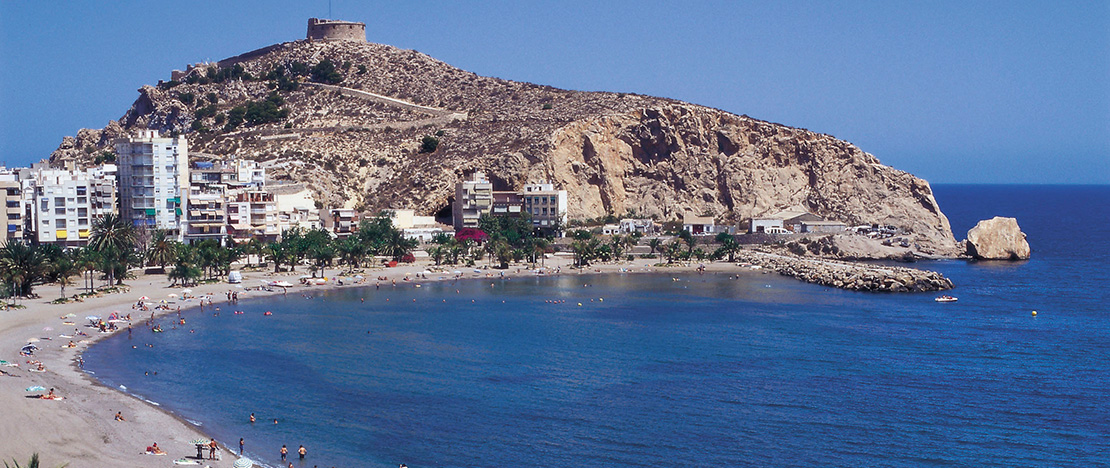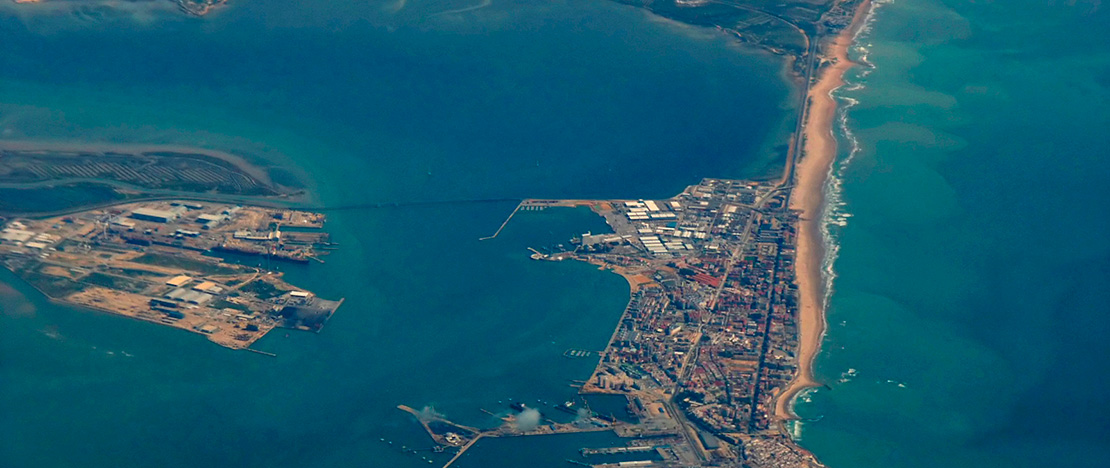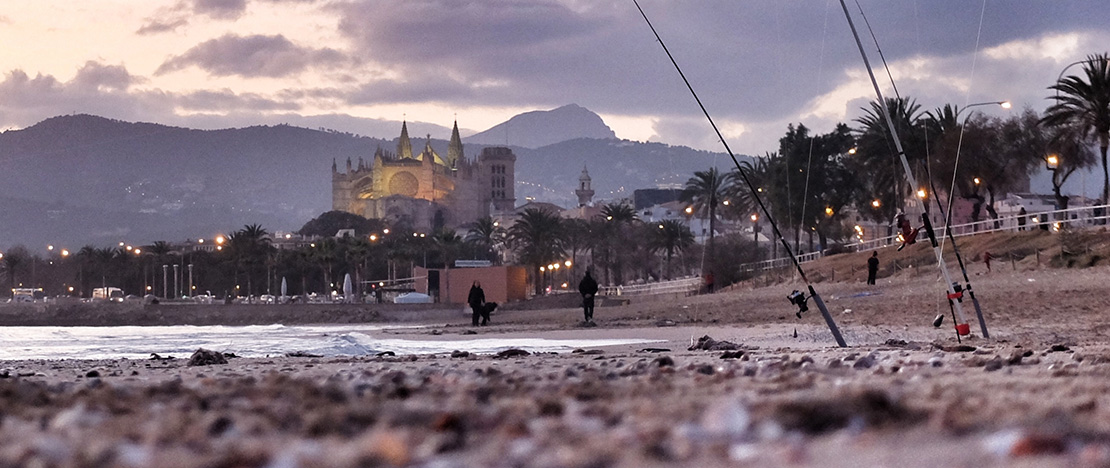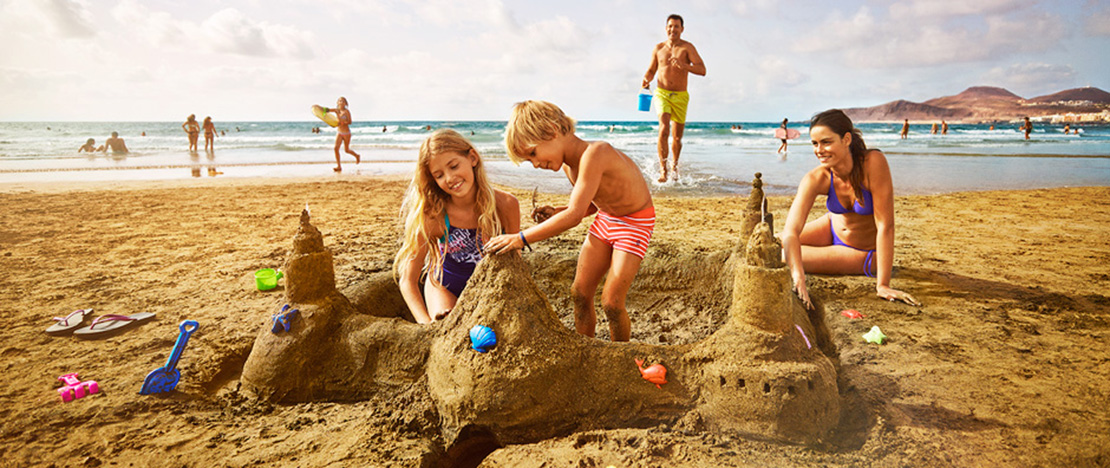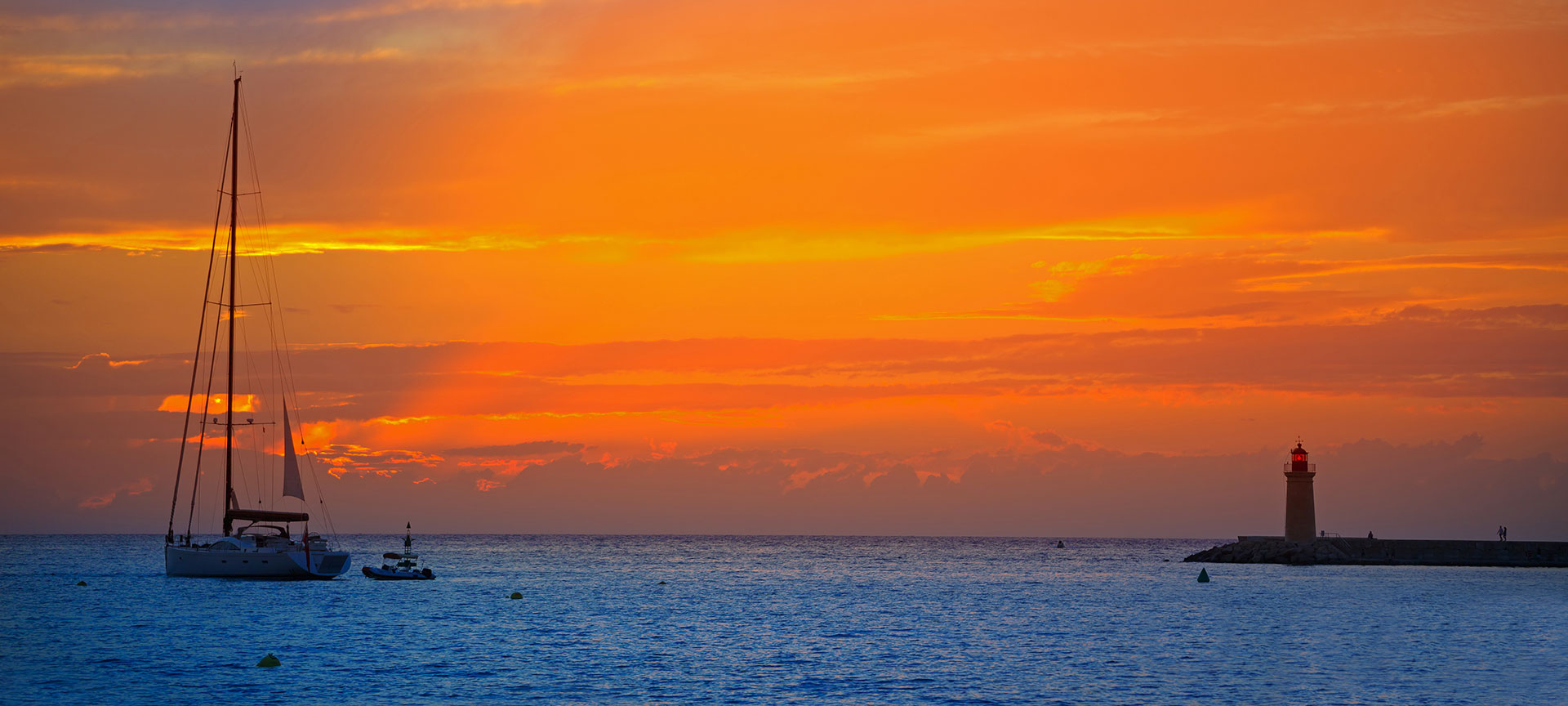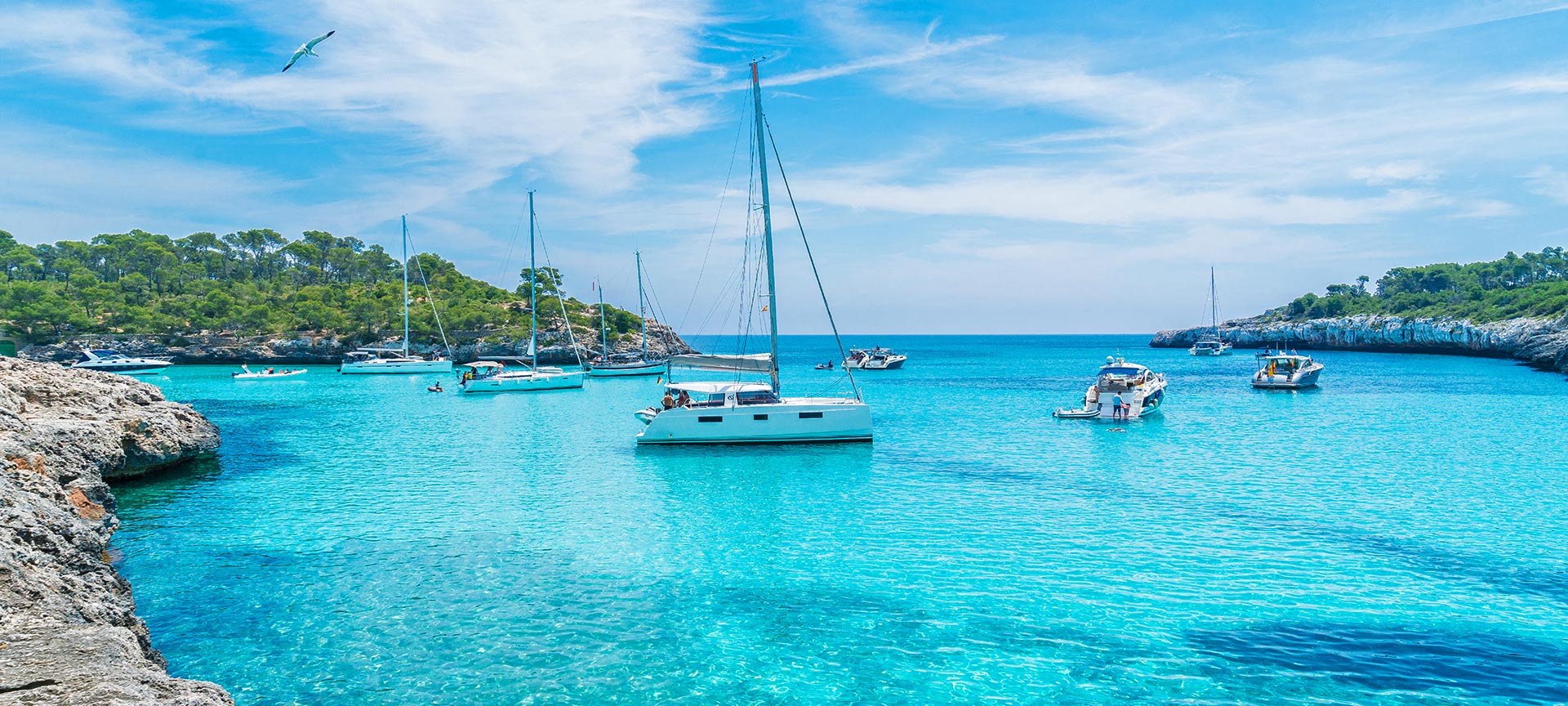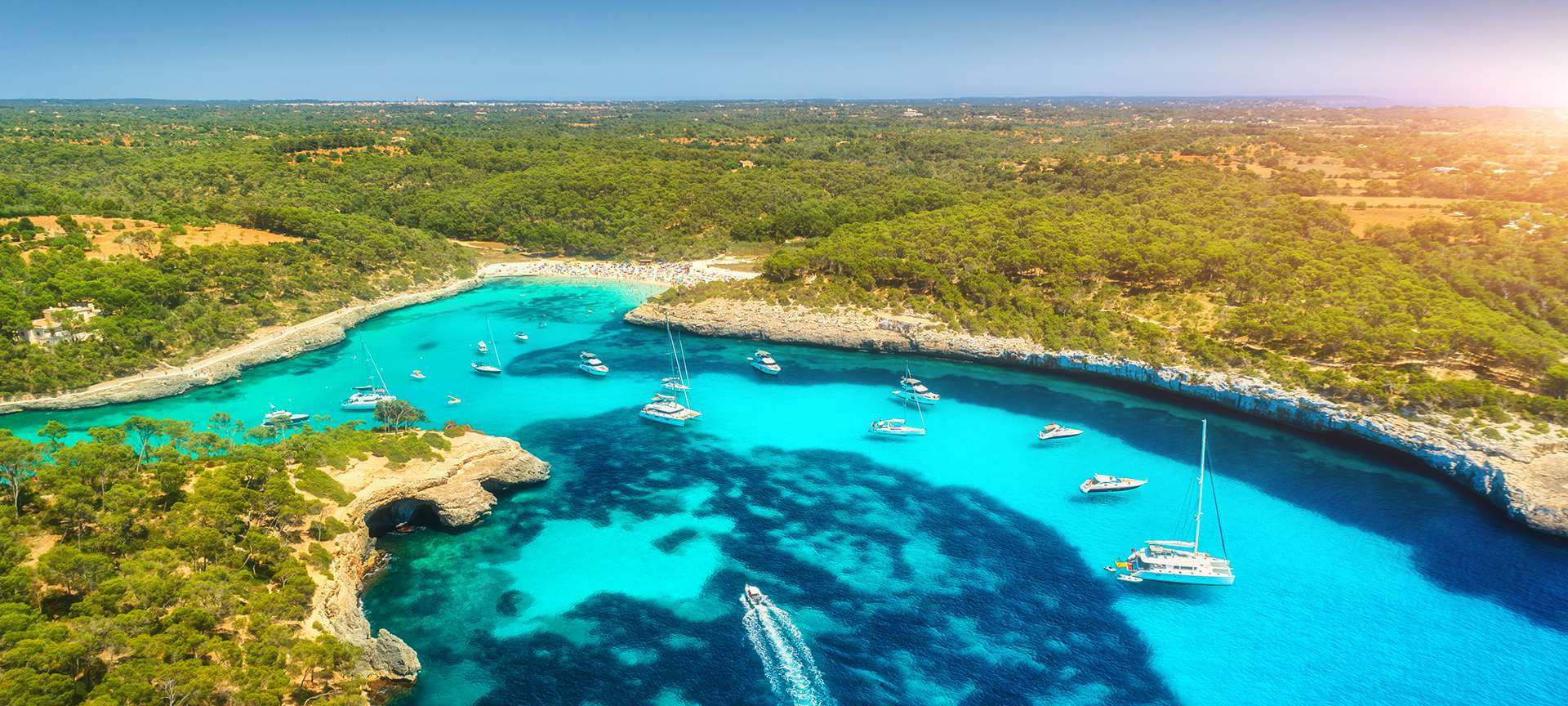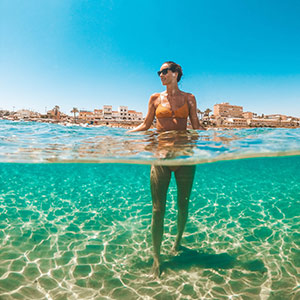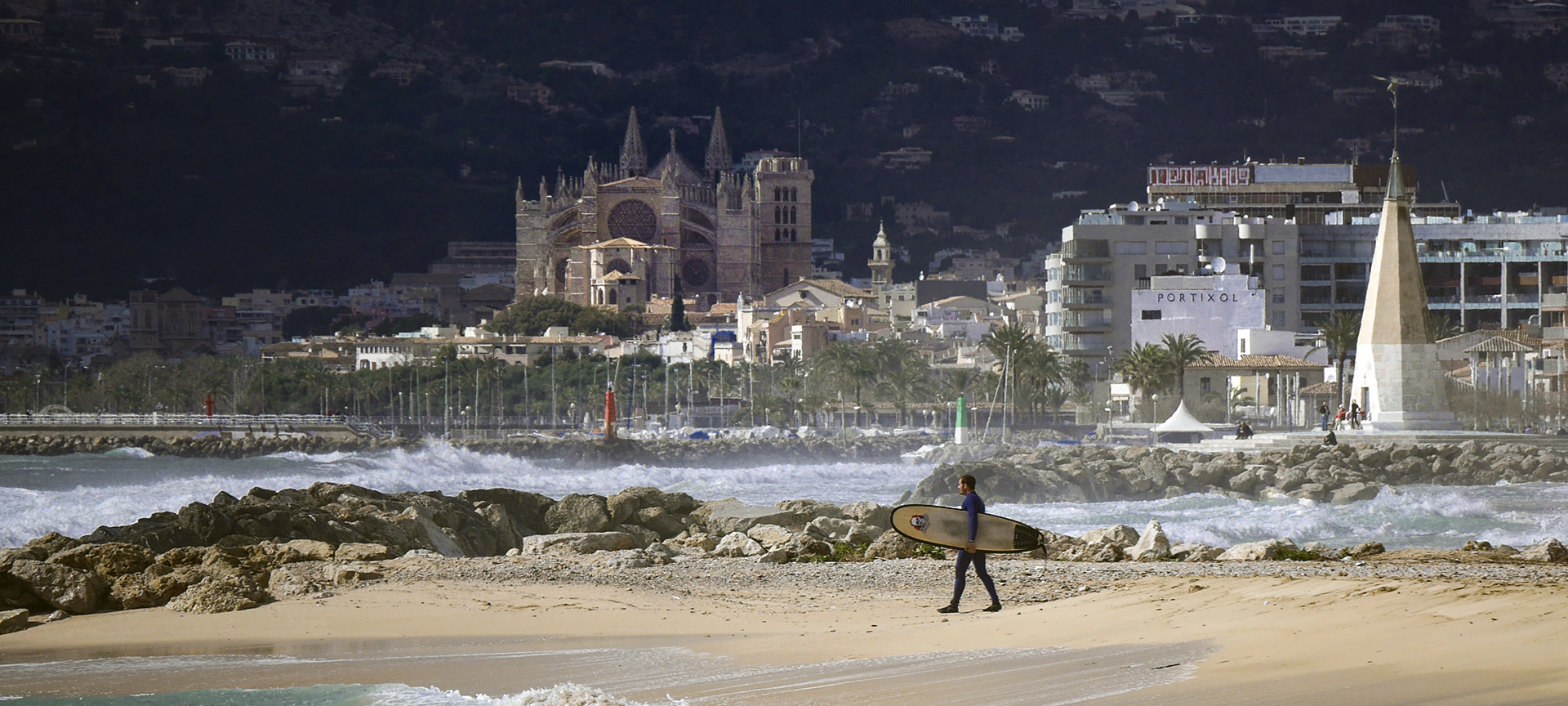
Spain’s urban beaches: sun and sea without stepping foot outside the city
Would you like to travel to a Spanish city and also be able to take a stroll on the sand and a dip in the sea? No problem. In Spain, you will find various urban beaches fully equipped with hammocks, restaurants, sports facilities, etc. In addition, many of them organise all kinds of nautical activities so that you’ll always have something to do. Due to their convenience and proximity to the city, these beaches are perfect if you are travelling with children, or if you want to be able to visit the major tourist attractions as soon as you leave the water.We’ll recommend a beach for each of Spain's coastal regions, although the list could be much broader.So, when you get tired of the city lights, a little paradise will be waiting for you just a few steps from the centre, where you can put on your bathing suit and sunglasses. Quality of life at its best.
Debe activar Javascript para poder utilizar este servicio
-
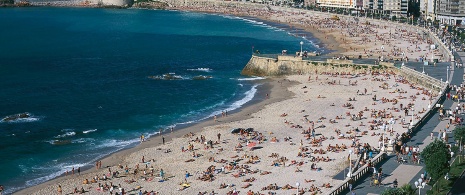
Playa de Riazor, in A Coruña
We'll start with the Atlantic Ocean, in Galicia, in the northwest of Spain and specifically in the province of A Coruña. The intense blue colour of Playa de Riazor, the smell of salt, the calm atmosphere and its waves on winter days are such a part of the city that A Coruña would not be the same without it.When you are there, you will see that Playa de Riazor, Playa de Orzán and Playa de Matadero are joined together to form a kind of shell, open to the sea. Admiring the shape that these beaches form from any of the rooftops is truly spectacular, especially at sunset. And once on the beach, you’ll be able to enjoy water sports, such as surfing or sailing.One of the most amazing experiences you can have in A Coruña is travelling its 13 kilometres of promenade (one of the longest in Europe), which will take you to the Finisterrae Aquarium or to the famous Tower of Hercules. Along the way you’ll see that part of the promenade is adorned with lampposts painted an intense red and with gloss by the artist Julia Ares.Keep in mind that the Riazor-Orzán beaches have kiosks and restaurants with terraces where you can sample Galicia’s delicious seafood. In addition, in summer they host sports competitions, concerts and the famous festival of the Bonfires of San Juan on the night of 23rd June.
-
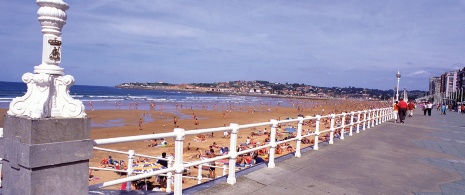
Playa de San Lorenzo, in Gijón
We continue along the northern coast of Spain until we reach the Cantabrian Sea, Asturias and specifically the city of Gijón. Located in the middle of the bay, the famous San Lorenzo beach, one of the best known in Asturias with its fine, golden sand, stretches over 1,500 metres. You will fall in love with its beauty and, above all, its convenience, as it is equipped with beach umbrellas, hammocks, a sailing club, etc.It is worth strolling down the beach at any time of the year, admiring the horizon along its nearly three kilometre-long promenade that reaches other beaches and always has a good atmosphere. You can start off your walk at the Church of San Pedro and then access the beach by La Escalerona, its most monumental entrance.Interested in playing a sport? Try surfing, windsurfing, kayaking, beach soccer or beach volleyball.
-
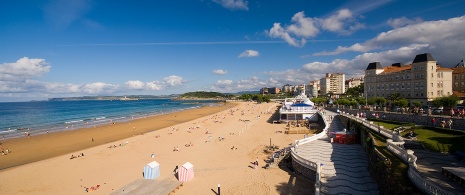
Playa de El Sardinero, in Santander
We move on to Cantabria and the bay of Santander, which is a member of “The most-beautiful-bays-in-the-world” club. Specifically to a beach that is extremely well-known in the city: El Sardinero. In fact, there are two beaches in El Sardinero: the First and the Second (the longest, extending over a kilometre), which are joined to La Concha at low tide.In fact, El Sardinero is a district of Santander that you will find between the Magdalena peninsula and the Cabo Mayor lighthouse. We assure you that strolling through this area is a true delight. Its origins date back to the 19th century and it is full of stately buildings, such as the Gran Hotel Sardinero or the Gran Casino. It also has the charming gardens of Piquío that appear to delve into the sea.After walking along the beautiful, popular promenade, once on the beach, you will notice the fine, golden sand and the multitude of services on offer. you'll be sure to stay the entire day. Would you like to hear an interesting story about these beaches? If you choose to take a dip in the First beach at El Sardinero, you’ll be at the place where the nobles used to go in the past to enjoy the waves. The Second beach at El Sardinero, however, was reserved for the common people and today you will find a children’s playground and different restaurants in the vicinity.
-
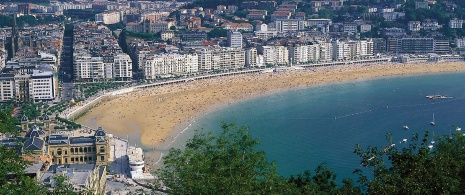
Playa de La Concha, in Donostia-San Sebastián
This city, where you're sure to let out a sigh, is located in the Basque Country (specifically in the province of Guipuzkoa). Donostia-San Sebastián is very beautiful and its Playa de La Concha beach is a symbol that everyone wants to get to know. It is considered one of the best urban beaches in Europe, and you will find it between the Town Hall and Pico del Loro.As you walk along the promenade, stop to take a photograph with its emblematic white railing or walk down to the area of La Perla, a thalassotherapy centre that has been preserved from the Belle Époque of Donostia. You can continue to go around Mount Urgull along the Paseo Nuevo and Playa de la Zurriola in an urban promenade spanning around six kilometres.Whilst lying on the fine, golden sand of the Playa de La Concha or practising a water sport, you're sure to notice Santa Clara Island. In the middle of the bay, it adds even more magic to the landscape. Did you know that this island has a small beach that appears and disappears depending on the tide?And one last piece of advice: don’t leave La Concha without seeing it illuminated by the soft light of the sunset. It will be an unforgettable moment.
-
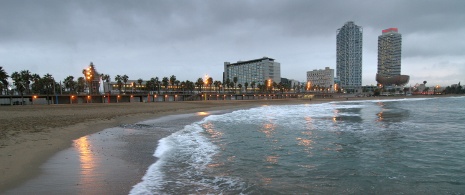
Playa de la Barceloneta, in Barcelona
The current now brings us round to the Mediterranean Sea. We're on the most famous beach in the city of Barcelona (Catalonia): Barceloneta. It takes its name from the old seafaring quarter, although today the locals still go there to sample fish and shellfish dishes.A children's play area, hammocks, beach umbrellas, drink and ice cream kiosks, restaurants, gym areas and beach volleyball, ping-pong or ta-ka-tá (a typical sport in Barcelona)... This beach has everything you could possibly want, and gives you the option to go surfing, paddle surfing, etc.If you want to get to know the beach's surroundings, your best bet will be to take a stroll around the Port Vell and the Rambla de Mar Avenue, visit L'Aquàrium de Barcelona (especially if you are travelling with children), the Palau de Mar building or, just on the other side of the beach, the Puerto Olímpico.And if you’re interested in other activities apart from bathing in the water , the Fishermen’s Guild organises guided tours to learn about the history of the fishermen of Barceloneta. On the other hand, you can also take a “golondrina”, a typical boat, which will show you the city’s sea shore with a glass of wine in your hand. Sound enticing?
-
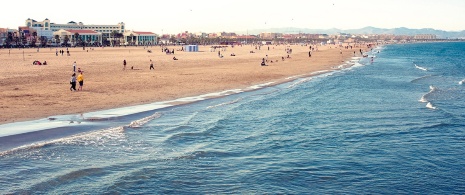
Playa de la Malvarrosa, in Valencia
In the east of Spain, also in the Mediterranean, we find the city of Valencia (Region of Valencia) and its urban beach par excellence: the Malvarrosa. And why was it given this name? Because during the 19th century, a gardener named Félix Robillard bought a plot of land by the sea and filled it with plants, including a geranium called Malva-Rosa.Today this beach –in addition to El Cabanyal, right next to it– is a place you can go to for a stroll and to sun yourself at any time of the year, as the climate in Valencia is almost always mild and the temperature of the water will be pleasant. As well as practising different water sports, you can cycle along the promenade, go to a small library right on the beach and visit areas for exercise.You’ll be spoilt for choice with the selection of restaurants along the promenade. What about booking a table at an arrocería (rice restaurant) and enjoying a paella overlooking the sea? And of course, don’t miss the special light in this place, which has inspired beautiful paintings by artists like Sorolla.
-
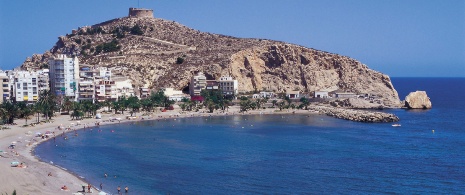
Playa de Poniente, in Águilas
In the Region of Murcia, we could direct you towards several urban beaches, such as Cartagena or Mazarrón, although on this occasion we are going to recommend Playa de Poniente in Águilas, along the Costa Cálida.More than a kilometre long, it is located next to the city and has fine sand and shingle. You’ll notice that it is crescent-shaped, and that it extends to Casica Verde beach.It is ideal for visiting with your family and spending a great day, because it has playgrounds for children and a pleasant walkway with palm trees and terraces where you can have a drink. In the distance and on top of a hill, you’ll be able to make out the silhouette of the Castle of San Juan de las Águilas. After a dip, if you feel like it, you could go to visit it.
-
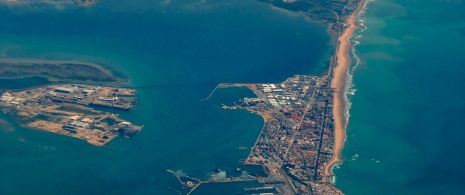
Playa de La Victoria, in Cádiz
In the west of Andalusia, we recommend this corner of the province of Cadiz. Are you a fan of those kilometre-long beaches of fine sand so typical of southern Spain? Then this is the place for you. La Victoria, at almost three kilometres long, is the sandy area par excellence in the city of Cadiz and is perfect for spending a full day alone, with a partner, children, friends, etc. Relax while sunbathing just a stroll away from the city, practise sports such as beach volleyball, take your children to the playground... At lunchtime, you’ll find various restaurants to choose from, and also great beach bars to taste typical tapas, such as shrimp omelette. Interested in cycling or skating? You can do that here too. In the evening, especially in summer, you can also have a drink on a terrace or in a discotheque. One of the things you’ll like most about this beach is that you’ll be able to make out the silhouette of the Cathedral in the background over the buildings of the old town of Cadiz. In addition, thanks to its location, you’ll get the chance to see film-worthy sunsets. Don’t be surprised if you come across events, such as open-air concerts or summer cinemas, because these usually take place on a regular basis. By the way, Andalusia is the second largest autonomous region in Spain, so in addition to this urban beach there are many others such as, for example, La Malagueta in the city of Málaga.
-
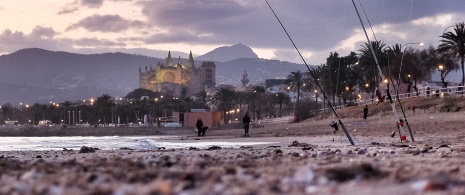
Playa de Palma, in Palma de Mallorca
Mallorca, the largest of the Balearic Islands, invites you to swim in the turquoise blue waters of the Mediterranean very close to its capital: Palma de Mallorca. Although Playa de Palma is not exactly the closest to the city (it is approximately 10 kilometres away), it is considered an urban beach and is worth a visit to enjoy the almost five kilometres of sandy beach. As well as travelling by car, you can easily get there on the bus lines 15 and 25 that leave from Plaça de la Reina.The beach extends from Can Pastilla to S'Arenal and the whole area is full of international hotels and restaurants and Mediterranean cuisine that will make your stay very comfortable. If you are travelling with children, you can take them to the Palma Aquarium, a marine park with over 8,000 animals or to a splash park. When it comes to water sports, there are several centres that will help you with stand up paddle surfing, windsurfing, surfing, kitesurfing, kayaking, etc.If you’re interested in nightlife, you’ll also find several bars and discotheques on this beach.
-
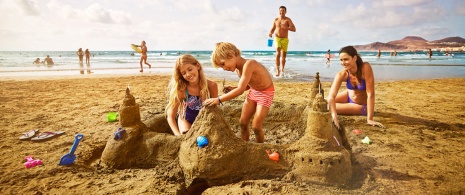
Playa de Las Canteras, in Las Palmas de Gran Canaria
In the northeast of the island of Gran Canaria (Canary Islands), we return to the Atlantic. This beach is the pride of the city. All you need to do is take a stroll along its lively avenue full of restaurants, cafés and ice-cream parlours to experience the atmosphere 365 days a year. Best of all, the temperatures are almost always mild. How about a winter dip with the sun warming your face?Along the more than three kilometres of Las Canteras you will find different areas. The southernmost (known as La Cícer) is the youngest of them all and where people usually enjoy surfing or bodyboarding. The Alfredo Kraus Auditorium is located right next to it. Then there is the area of Peña de la Vieja and Playa Chica, perfect if you are travelling with your family, because there is a barrier of volcanic rock called "La Barra" that prevents the waves from being too strong. Finally, there is Playa Grande and La Puntilla, the most protected area of all due to the presence of "La Barra" right in front of it, forming a kind of natural pool, which is ideal for paddle surfing beginners. Here you’ll see incredible sand sculptures and will be able to go to some of the concerts that are organised, etc.If you can, make sure to go snorkelling in Las Canteras, because the marine life in its waters is amazing. Get ready to see Canary damsels, viejas, dreamfish, etc. And if you’re travelling to the city by boat, the beach is just a few blocks from the cruise terminal. There’s nothing stopping you from coming here!By the way, the other Canary Islands also have magnificent urban beaches, such as Las Teresitas in Tenerife.
Finally, we could not miss out the autonomous cities of Ceuta and Melilla, in the north of Africa, where you will also find urban beaches, such as La Ribera (Ceuta) or the Hippodrome (Melilla). Fancy taking a dip?
Travel plans for inspiring you

